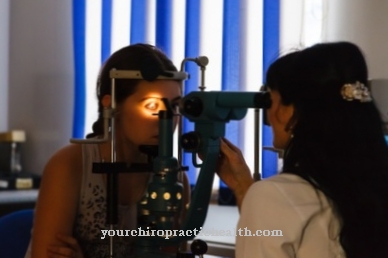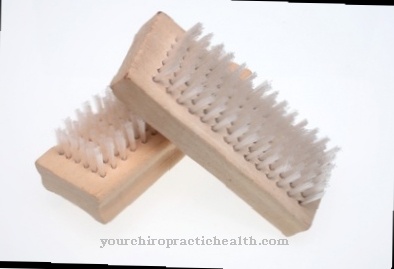A Depilation laser is used to remove hair permanently. Different types of lasers are used.
What is a hair removal laser?

So-called depilatory lasers are laser and light treatment systems that are suitable for slowing down hair growth or for permanent hair removal.
This procedure is also known as laser epilation. Diode lasers or longer-pulsed solid-state lasers are primarily used. The devices work according to the photothermal principle. Only light of a constant wavelength hits the hair.
The use of a hair removal laser may only be carried out by trained specialist personnel, because improper use can lead to unaesthetic shifts in pigment or burns.
Shapes, types & types
When it comes to hair removal lasers, it is important to distinguish between different types of laser. These are diode lasers or longer-pulsed solid-state lasers. These include the ruby laser, the alexandrite laser and the Nd: YAG laser. Diode lasers are used particularly in the super hair removal process (SHR).
Every single laser type has a fixed wavelength. With a ruby laser the wavelength is 694 nm, with an alexandrite laser it is 755 nm. A diode laser comes to 808 nm, while an Nd: YAG laser works with 1964 nm wavelength.
In order to be able to perform an optimal laser treatment, you also need a little luck that the right wavelength is available. In addition to the skin and hair color, an important criterion is also the hair type of the person being treated. If your skin type is darker, it is recommended to be cautious when using a depilatory laser.
Most laser systems are able to at least slow down the growth of hair. The devices are used for permanent hair removal from all desired parts of the body, for the removal of telangiectasias or spider veins from the face and for rejuvenation of the skin.
Structure & functionality
In most cases nowadays, an alexandrite or diode laser is used for hair epilation. These devices emit laser pulses in wavelengths that are only absorbed by melanin. This procedure can reduce possible side effects such as injury to small veins.
Newer models even have the option of being individually adjusted to the hair and skin type of the person being treated. The device uses measuring processes to estimate how much pigment is in the skin and hair. Then there is an individual recommendation to stop treatment.
The skin and hair dye melanin plays a crucial role in hair epilation. Since melanin is particularly found in dark hair, it can also be removed more easily with a laser than light hair. For example, hair with a lot of melanin has a significantly higher absorption capacity.
In contrast to earlier years, however, it is now possible to remove reddish or blond hair with the help of a laser. However, laser epilation is still not feasible for white hair, as this no longer has any dye.
In principle, the depilation process is the same for all laser types. The respective laser emits light at a certain wavelength. During the treatment, a laser handpiece is placed on the skin. The laser then emits a pulse step by step. A meeting between the laser beam and the germ cells of the hair roots results in their destruction. This can also prevent hair regrowth.
Usually around eight treatments with a depilatory laser are required, which also depends on the treatment site. Usually the laser treatments are repeated after a break of around four weeks. This procedure continues until the desired result is achieved.
However, delays in the context of laser hair removal are quite possible, because this procedure is only suitable for removing adult hair. On the other hand, the laser cannot detect small, not fully grown hairs.
Medical & health benefits
Depilation lasers have no medical benefit, but are of cosmetic importance. This is culturally determined and is derived from social ideals of beauty. Depilatory lasers are particularly common in western countries.
The health advantage of treatment with a depilatory laser is that the method is pain-free. In order to avoid redness or swelling, cooling is carried out during the procedure. In contrast to other hair removal methods, however, there is no pain whatsoever. Only a short, stinging and warm feeling can be heard, which however quickly subsides again.
However, side effects are sometimes possible.For example, permanent disorders of skin pigmentation or burns can occur, but this is only rarely the case. It is important to have the treatment carried out exclusively by an expert who also carries out a test treatment with the laser. People whose skin is extremely sensitive or who have skin problems should not use a hair removal laser.
In the run-up to laser hair removal, no intensive sunbathing or solarium visits are allowed. This applies for a period of several weeks. This requirement should be strictly adhered to, otherwise dark or light spots can appear on the treated areas of the body. Even after the laser treatment, it is important to avoid the sun for a few weeks.
It is still unclear whether the use of a depilatory laser actually results in permanent hair removal in every case, as no specific long-term studies are available. However, the success rate of laser treatment is considered to be high. Occasionally, however, individual hairs can grow back, which makes follow-up treatment necessary.

























.jpg)


